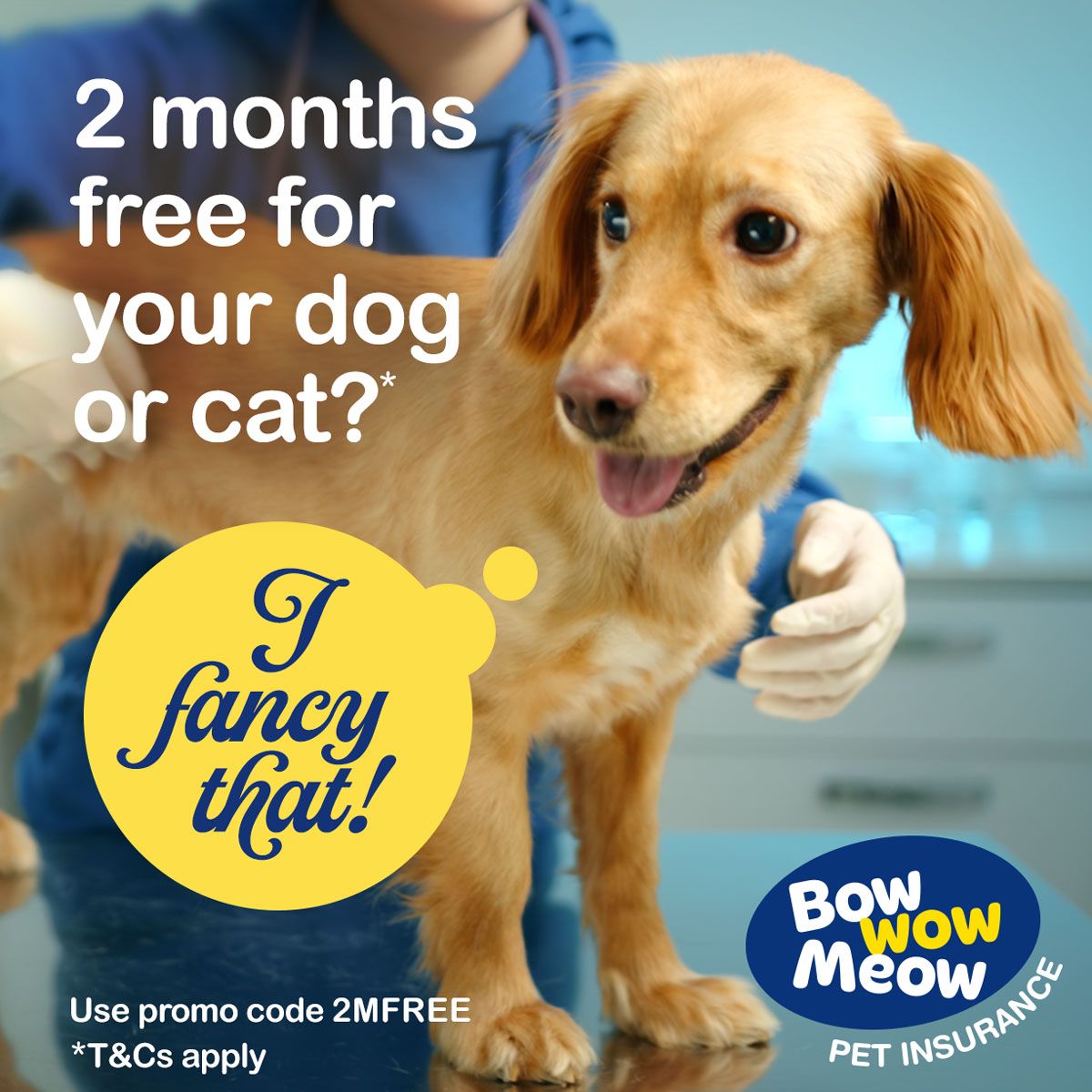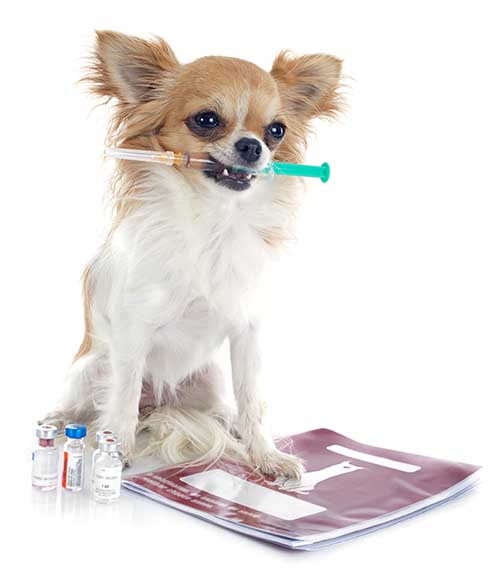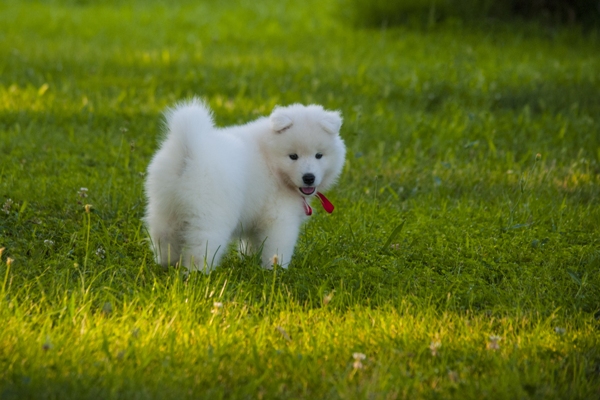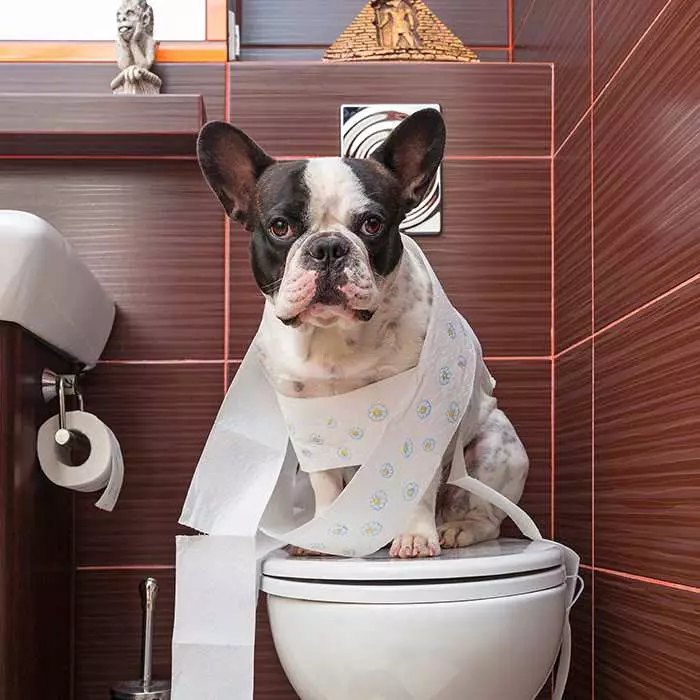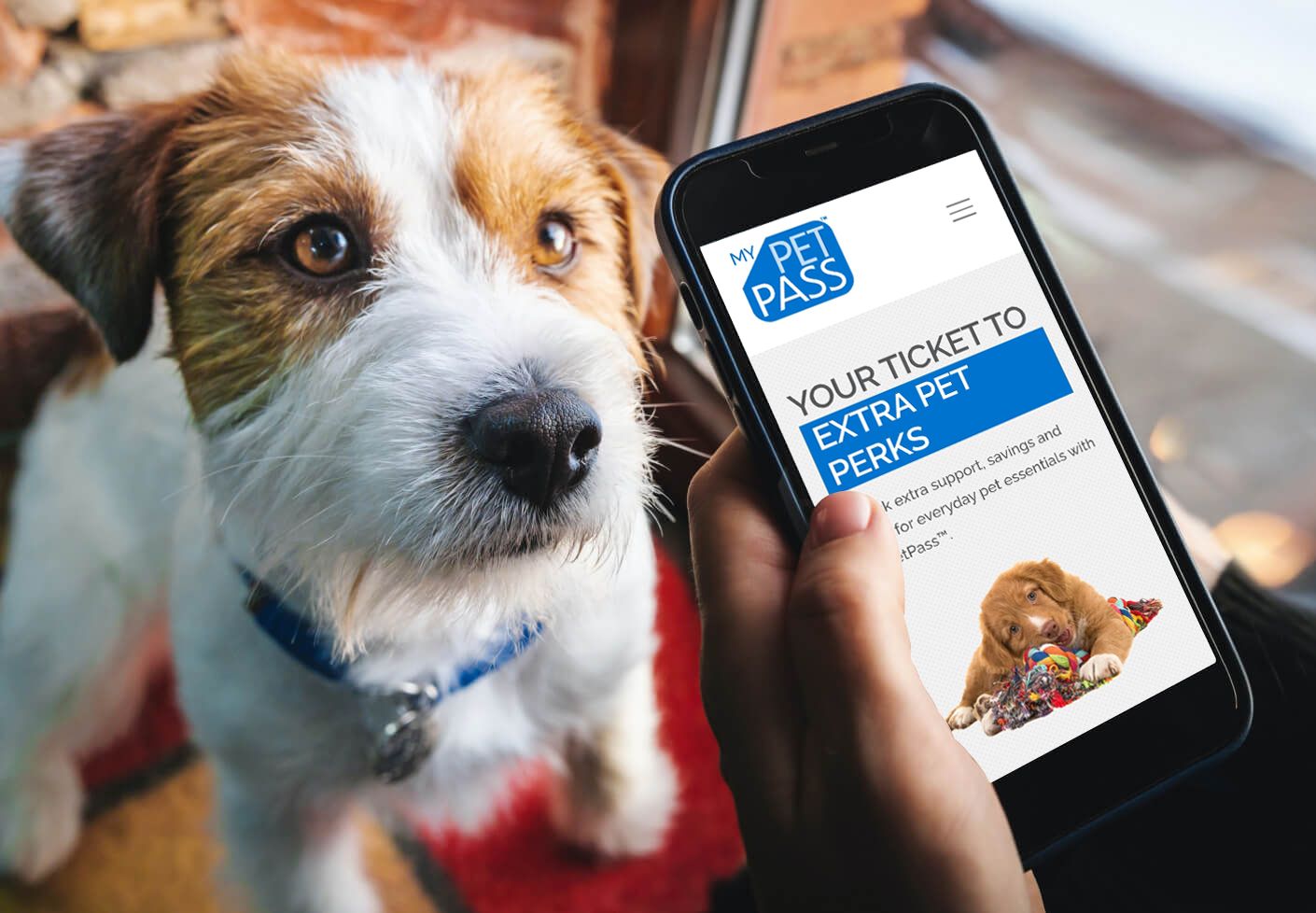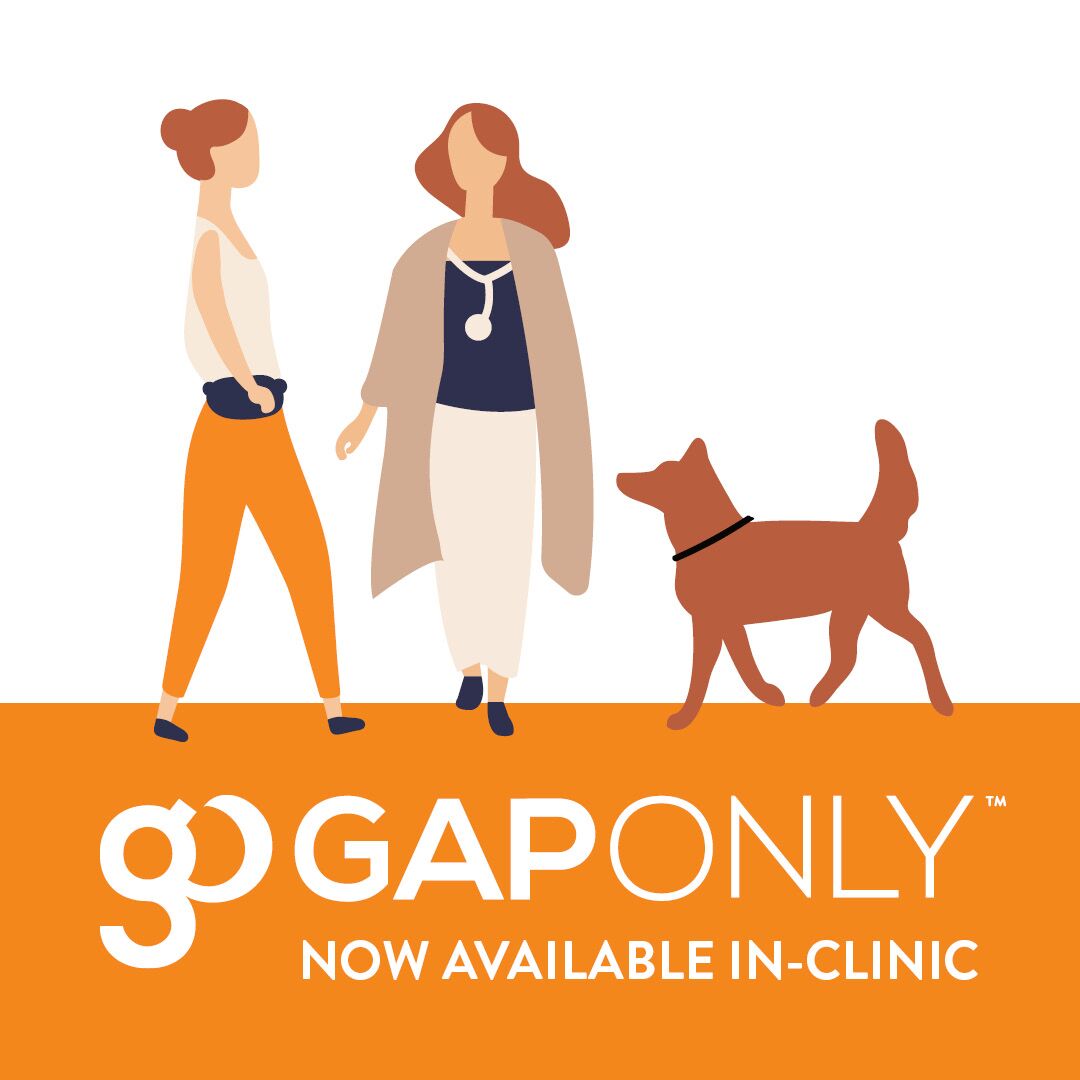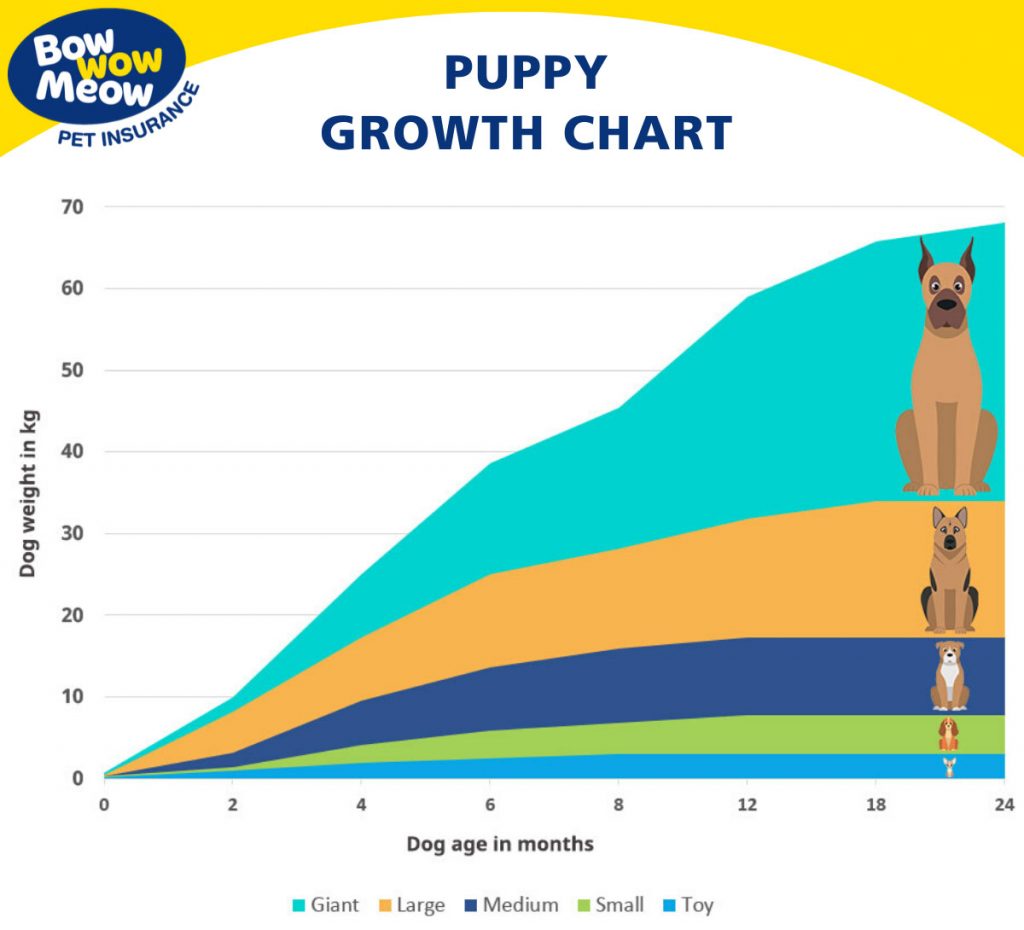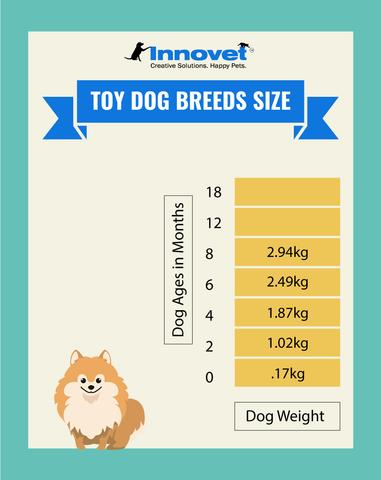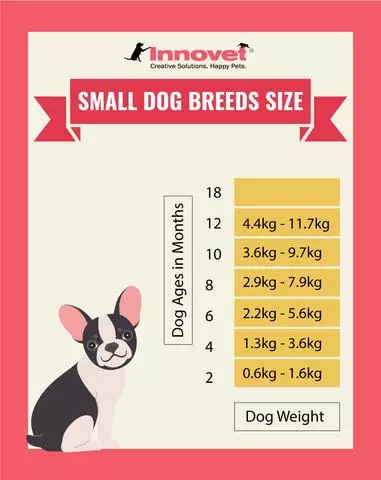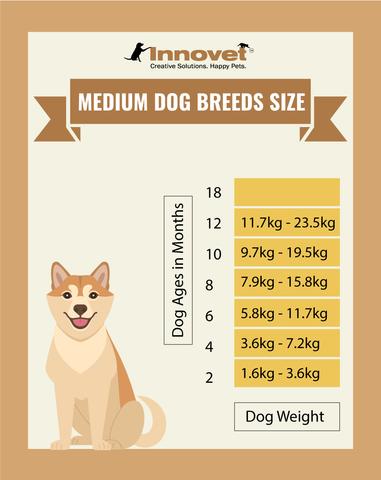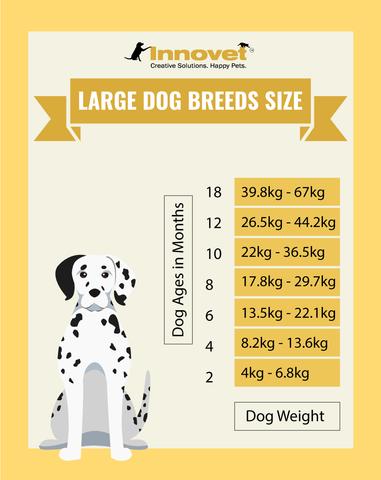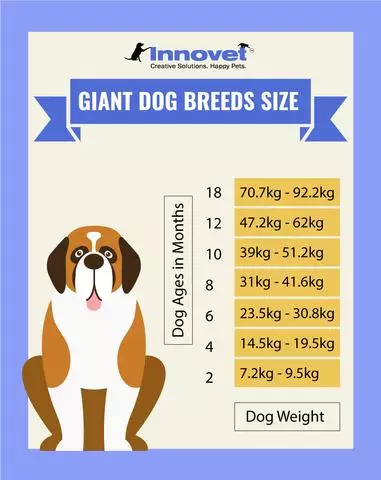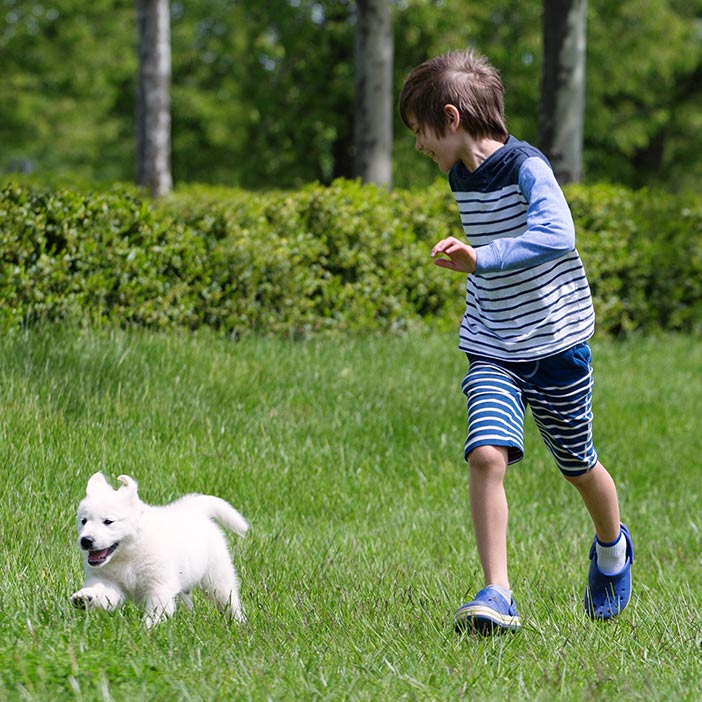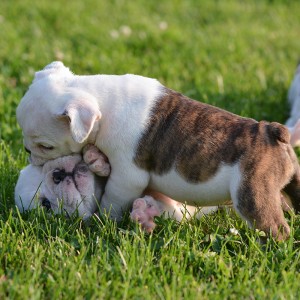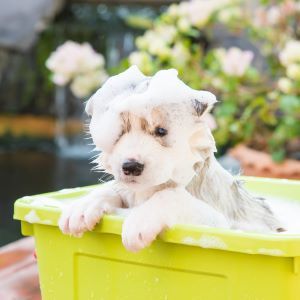Puppy development stages: newborn milestones & growth charts

The stages of puppy development are wondrous to behold. Your dog will grow and gain independence each day as it passes through the key puppy development stages and reaches important puppy milestones.
While all dogs pass through the same puppy stages in their early life, bear in mind that small dog breeds develop more quickly and reach maturity at a younger age than larger breeds (see our puppy growth chart below).
In this article we explore the various puppy development stages, looking not only at a puppy’s physical growth but also at its social and emotional maturation. Socialisation is an important aspect of your puppy’s growth and development, being the process that all dogs need to go through in order to live comfortably in our human world. Socialisation includes learning not to fear new experiences and to welcome human beings as friends.
Puppies are very adventurous and highly accident prone, and often end up hurting themselves whilst they are still growing. Their underdeveloped immune system means they are also vulnerable to getting infections and catching diseases.
Consider pet insurance to help protect you and your puppy from the start. Get your first 2 months cover free 2!
The puppy development stages
Each of the puppy stages includes important milestones in your puppy’s journey from a helpless new-born to an independent adult. By knowing what to expect and when to expect it, you can be better prepared to deal with your puppy’s more challenging behaviours, understand what is age-appropriate, feel comforted that your puppy is developing normally and be aware if there is any reason for concern.
Read on for a detailed explanation of each puppy development stage, or jump ahead by selecting the appropriate section below:
- The Neonatal Period – 0 to 2 weeks
- The Transitional Period – 2 to 4 weeks
- The Socialisation Period – 4 to 12 weeks
- The Juvenile Period – 3 to 6 months
- Adolescence – 6 to 18 months
- Adult – all grown up
- Puppy growth chart
- Weight charts by breed size
The Neonatal Period – 0 to 2 weeks
For the first two weeks of life, a puppy is considered a neonate or new-born. Puppies in the new-born puppy development stage are completely helpless, being born blind, deaf and neurologically underdeveloped. They need to rely entirely on their mother and spend most of the time sleeping or eating.
New-born puppy’s body
The first week
- Puppies are born fully furred
- They can touch and taste
- Their eyes and ears are closed so they cannot hear or see
- They can’t stand or support their body weight, but their front feet are strong, and they can pull themselves towards their mother
- They make tiny squeaking noises when they are cold, but are mostly silent
- They cannot regulate their own body temperature and need their mother for heat
- There is almost no difference in their brain activity when asleep and awake
- They grow rapidly and double their birth weight in the first week to ten days of life
The second week
- Their eyes start to open at around ten to fourteen days, although they can’t see very much yet; sometimes one eye opens before the other
- Their forelegs are getting much stronger
- They continue to grow rapidly, adding 5-10% of their body weight
New-born puppy’s socialisation
 Socialisation in this initial stage is influenced by mum. The puppy actively seeks its mother – if separated from her, he will start to vocalise and crawl, swinging his head from side to side as he tries to find her. She is constantly attentive, only leaving her babies to eat or go to the toilet. If a puppy cries, mum responds by moving it towards her and licking it.
Socialisation in this initial stage is influenced by mum. The puppy actively seeks its mother – if separated from her, he will start to vocalise and crawl, swinging his head from side to side as he tries to find her. She is constantly attentive, only leaving her babies to eat or go to the toilet. If a puppy cries, mum responds by moving it towards her and licking it.
The breeder will slowly begin to handle the puppies in order to get them used to human contact. Studies have shown that handling and other interaction with a human carer during the new-born stage can lead to a quicker maturation of the puppy’s nervous system and enhance the development of its motor and problem-solving skills.
New-born puppy care tips
- Feeding: new-born puppies are only able to feed by suckling from their mother (or if not possible, a commercial milk substitute), and they need to have milk about every two hours.
- Toileting: the mother licks her puppies’ ano-genital regions to stimulate urinating and defecating and she keeps the sleeping area clean by eating their waste products.
- Deworming: the breeder deworms the puppies for the first time at the end of the second week.
The Transitional Period – 2 to 4 weeks
There is a lot happening during the second stage of puppy development, as the puppy transitions out of the neonate period. Brain development quickly ramps up, with a marked increase in brain activity. The puppy also begins to show its personality.
Puppy’s body
The third week:
- Puppies can stand, sit up and even start walking, taking their first wobbly steps by the end of this week
- They can wag their tails
- Their ear canals open and they start to respond to sound, showing a startle response to loud noises
- Their vision improves and they start to respond to light and movement
- They start to make proper dog sounds and may make their first attempt at barking
- They can regulate their body temperature more effectively
- They start to cut their first milk teeth in preparation for weaning, with the front teeth, canines and incisors coming through first
The fourth week:
- Puppies become much more active and stronger on their legs
- They start to move away from the sleeping area to urinate and defecate
- They may try to climb out of the whelping box
- They can see quite well by now
- The back teeth start to come through
Puppy’s socialisation
 Socialisation in the second puppy development stage is influenced by their litter mates. Puppies begin to interact with their siblings, even actively playing and play-fighting with each other. They start to practice using social signals, such as growling, pawing and tail wagging. Biting behaviour may occur, which helps to relieve the discomfort of teething.
Socialisation in the second puppy development stage is influenced by their litter mates. Puppies begin to interact with their siblings, even actively playing and play-fighting with each other. They start to practice using social signals, such as growling, pawing and tail wagging. Biting behaviour may occur, which helps to relieve the discomfort of teething.
In this period, puppies begin to exhibit signs of distress for reasons other than being cold or hungry. Separation from their litter mates, a new environment, or accidentally wandering too far from the nest will cause them to cry.
The puppies’ mother will start to spend more time relaxing away from the puppies. If she lives indoors, she may re-join the family for more of each day. She will gradually stop cleaning up after her puppies.
Puppy care tips
- Feeding: Toward the of their third week, puppies may have their first taste of puppy food and the breeder may have commenced weaning. By the end of the fourth week, puppies are usually getting quite a bit of their nourishment from puppy food. They can now lap water from a bowl. If the mother is allowed near the puppies after she has been fed, she may regurgitate her dinner for them. This is completely natural and normal.
- Toileting: Puppies begin to urinate and defecate naturally, away from the nesting area, without stimulation from their mother.
- Deworming: The breeder deworms the puppies for a second time.
The Socialisation Period – 4 to 12 weeks
The third of the puppy stages is a truly wondrous period in which the puppy can now really run and play. It is probably the most significant period of the puppy’s young life and much of what he learns now will last throughout his lifetime. In this stage it’s incredibly important to socialise him by introducing him to other people and dogs, as well as new noises and environments.
Puppy’s body
- By the fifth week, puppies can bark properly – some can be quite noisy at this age!
- From the sixth week onwards, a small breed puppy may gain around 140 grams per week in weight, whereas a large breed puppy may put on around 9 to 10 kg per week – weekly weighing is recommended (see puppy growth charts by breed size below)
- At eight weeks the puppy’s brain is ready to start soaking up information, making it the ideal time to start training him
Puppy socialisation
As its name suggests, this puppy development stage is the critical time for learning socialisation skills – it is the time when puppies learn how to be dogs. They become familiar with all the species-specific behaviours, such as different body postures and vocalisations, that allow them to live and communicate with other dogs.
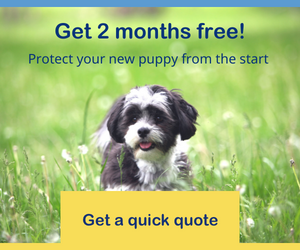 During the first half of this stage puppies will ideally still be with their mother and litter mates, and mum will educate her pups about discipline and dog-manners. She teaches them how to bite and what it feels like to be bitten, and they learn not to bite too hard. It is important for puppies to learn this lesson when they are young, so that they do not hurt other dogs and people as adults.
During the first half of this stage puppies will ideally still be with their mother and litter mates, and mum will educate her pups about discipline and dog-manners. She teaches them how to bite and what it feels like to be bitten, and they learn not to bite too hard. It is important for puppies to learn this lesson when they are young, so that they do not hurt other dogs and people as adults.
The window for optimal socialisation closes at around three months, and up to this age is the time when your puppy will most readily accept and adapt to new experiences. Good breeders start socialisation before puppies go home with their new owners (typically at around eight weeks), introducing them to lots of new experiences so that they won’t be afraid of them later. Positive interactions with people from weeks five to seven will play a large role in how puppies continue to interact.
During the second half of this puppy stage, when the puppy is in his new home, it is essential that he is exposed to many of the people, dogs, objects, sounds and environments he may encounter in later life, including being left alone for short periods, visiting the vet and travelling in the car. Puppies need some help with this process because at around three months old, they start to become nervous and fearful of unfamiliar people and events. As the owner, this is the time when you can have the greatest impact on your puppy’s social development.
Read more about Puppy socialisation and its importance.
Puppy training
At eight weeks, your puppy’s brain is ready to start soaking up information, making this the ideal time to get puppy training under way. Train your puppy to be happy with new encounters. From weeks eight to ten, your pup will go through a normal “fear” period that can be helped with training that is positive and encouraging. Expose the pup to a few brief and friendly visits from as many different puppy-friendly people and animals as possible. This teaches puppies not to fear people and other animals.
House-training your puppy can commence, as it is now able to learn to wait before eliminating and start sleeping through the night without a potty break. Biting can be a big problem during this stage, and you need to be patient and consistent in order to teach your puppy not to hurt people while playing.
Puppy care tips
- Feeding: At 6 to 8 weeks, puppies are fully weaned and enjoying four or five small meals a day. Initially, puppies may still suckle from their mother, but don’t actually need to. When you bring your pup home, you’ll be feeding it four times per day. By 9 to 12 weeks this will reduce to three meals per day.
- Grooming: Your puppy will need regular grooming, particularly if it’s a long-coated breed, and although the pup won’t have much coat yet, now is the time to begin.
- Exercise and play: Puppies under four months don’t need formal walks, just lots of opportunity to play and run around in your garden or yard. Teething toys, balls and rope toys are big favourites with many puppies.
- Vaccinations: Your puppy will have its vaccinations during the first month at home. You can take him out before his vaccinations are complete, as long as you carry him and don’t allow him onto the ground or in areas where other dogs may have been. After his vaccinations, it is important to check with your vet how many days to wait before it is safe for him to go outside in public areas and meet other dogs.



